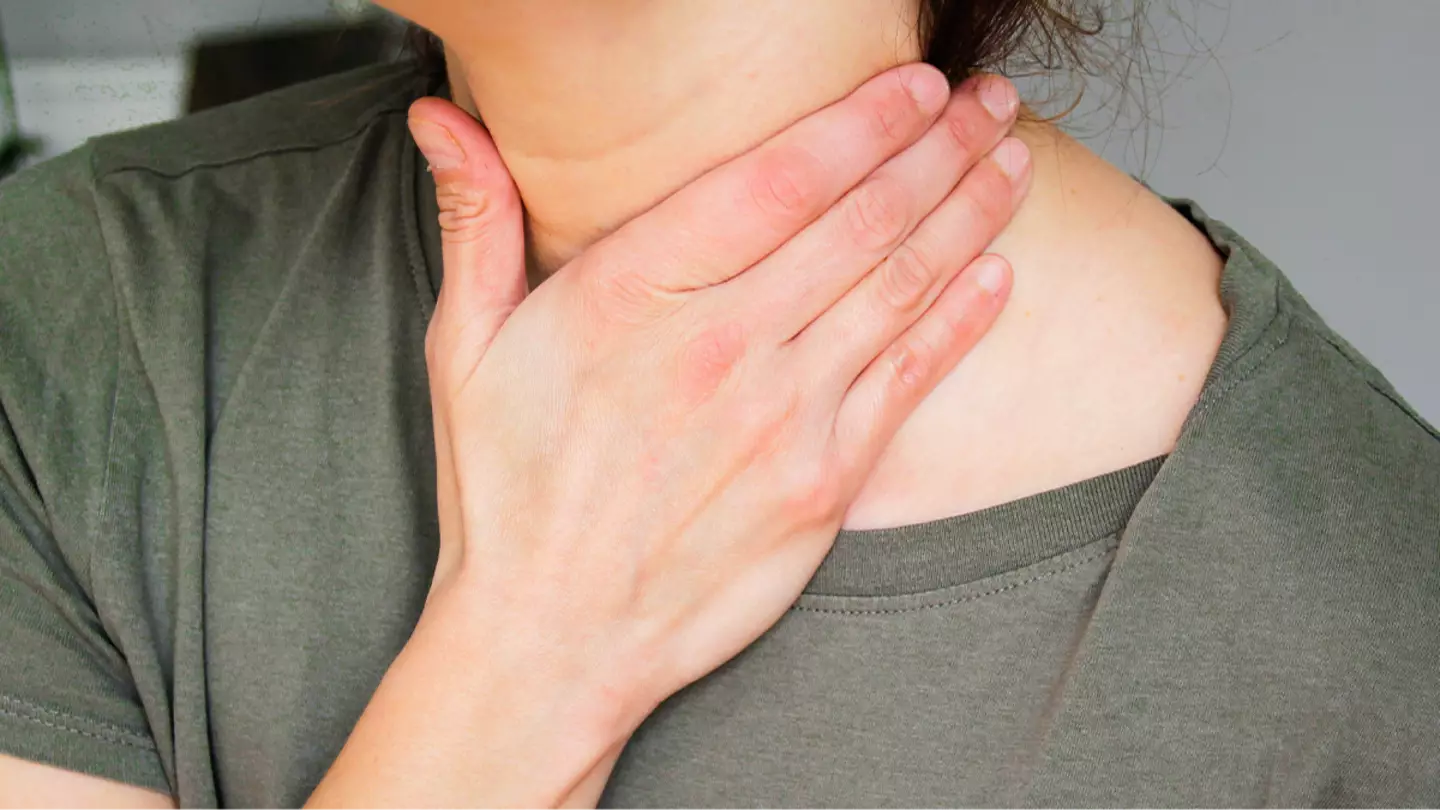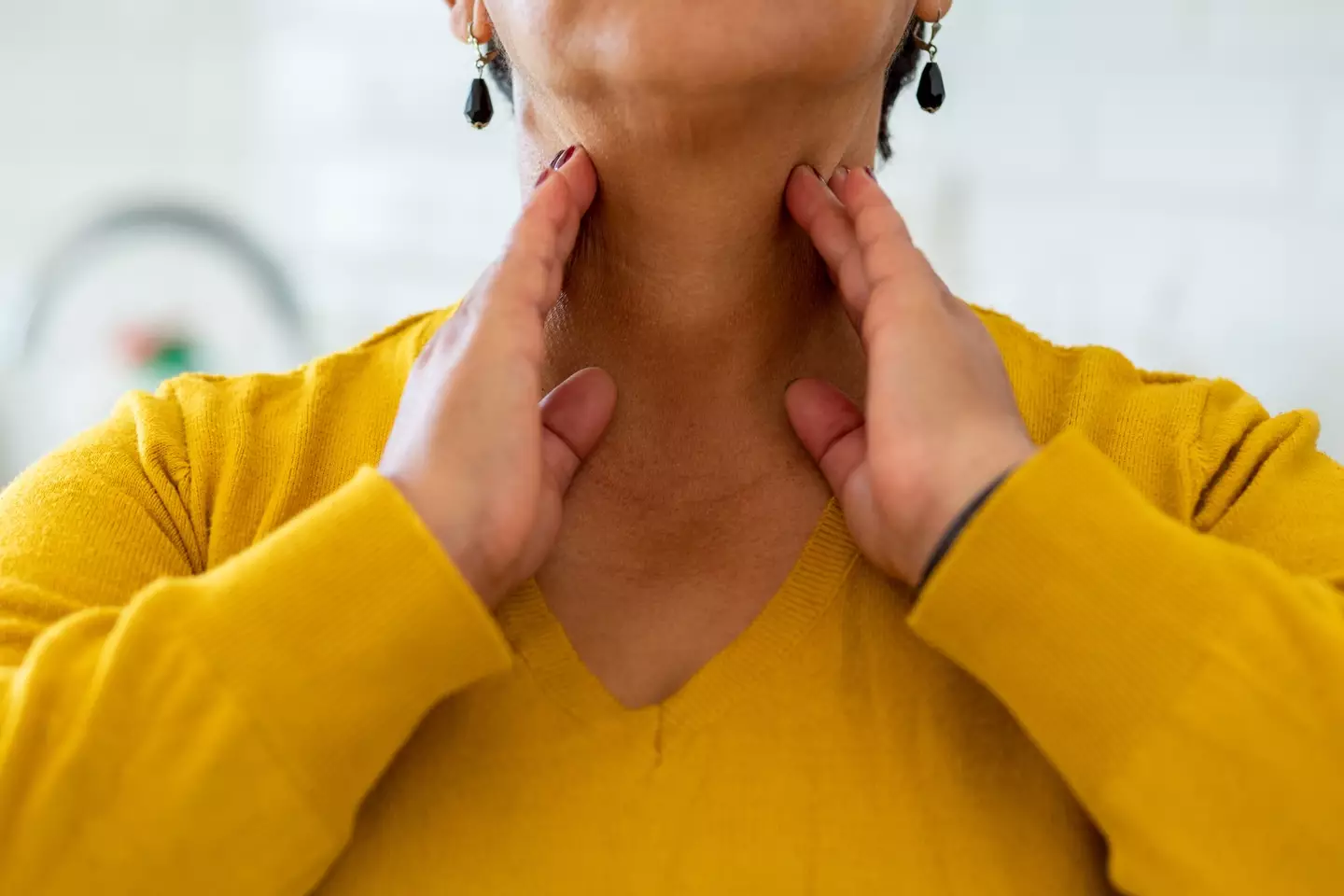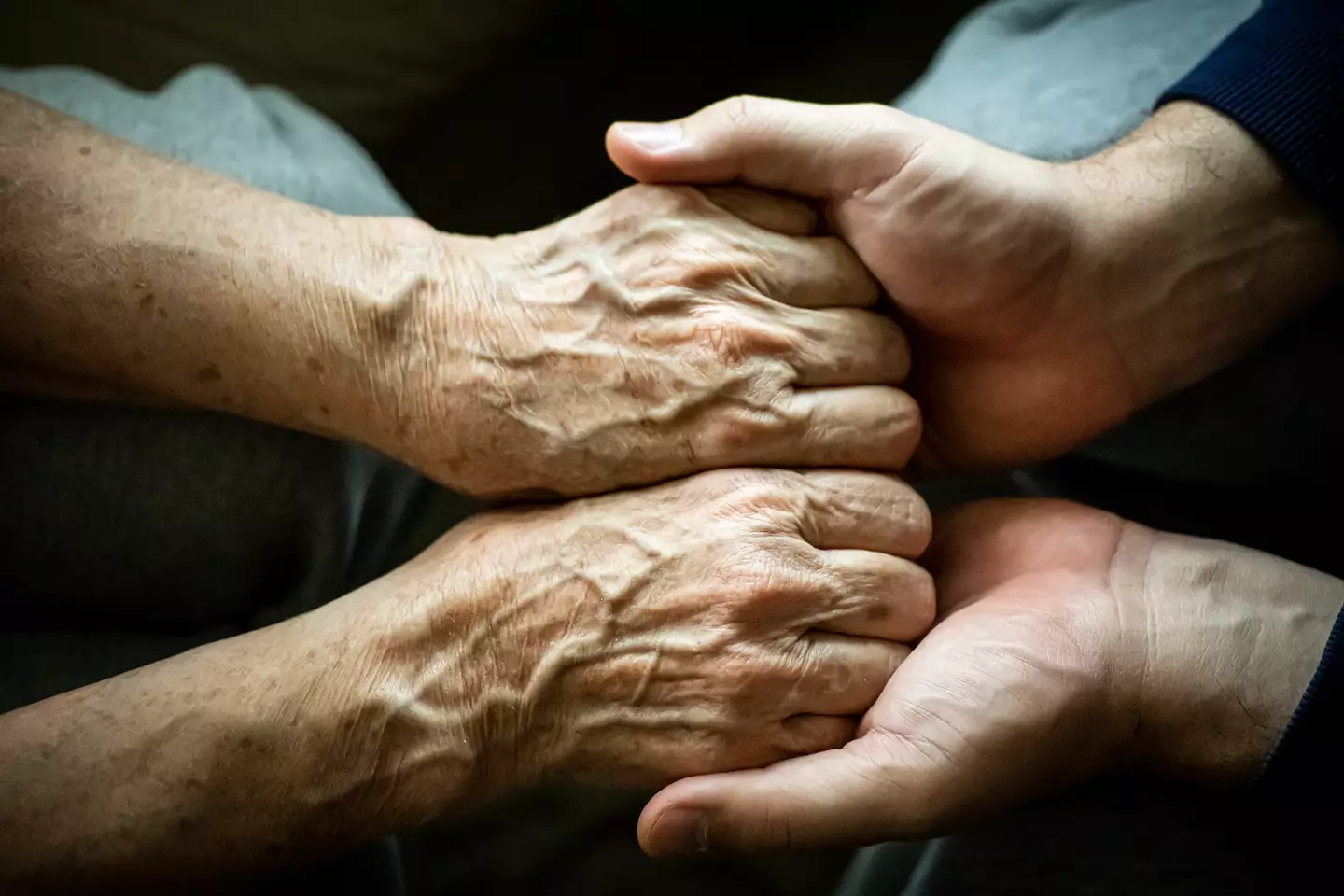Experts have detailed the exact number of steps you should be taking every day to reduce your risk of developing a dangerous heath condition.
Particularly for those who work in an office job or even complete their duties from home, it can be pretty difficult to get those steps in.
But to be brutally honest, it’s important we all get our steps in to keep healthy.
So, what is the ideal number of steps we should all take each day?
Well, you’ll be glad to hear it’s not the dreaded 10,000 mark, and the exact number has been backed up by a team of scientists in the UK.
A whopping 85,000 people were involved in the study with each participant wearing activity trackers measuring how often they were moving.


Scientists looked into how exercise can reduce your risk of cancer (Getty Stock Photo)
The team looked at how that correlated with the risk of developing 13 different types of cancers, and the results were pretty clear.
While the benefits seem to begin when you hit 5,000 steps, researchers found the magic number is in fact 7,000 steps per day.
The scientists explained that increasing your step count reduced your risk of six types of cancer, while an expert has explained how you can make sure you get your 7,000 steps in.
A senior lecturer in biochemistry at Loughborough University in the UK, Dr. Mhairi Morris, wrote in The Conversation: “At 7,000 steps, the risk of developing cancer dropped by 11%. At 9,000 steps, it dropped by 16%.
“Beyond 9,000 steps, the benefits levelled off. The difference in risk reduction became marginal, and varied slightly between men and women.
After following the participants for a period of six years, three percent of those involved developed some form of cancer according to the researchers.
Colon, rectal and lung cancer were most common in men, while breast, colon, endometrial and lung seemed to crop up more often in women.
Being more active reduced your risk of gastric, bladder, liver, endometrial, lung and head and neck cancer, according to the researchers.


Researchers found walking can reduce your chances of developing cancer (Getty Stock Photo)
Researchers even accounted for demographic and lifestyle factors that may have impacted the results, though the answers were still pretty clear: putting those steps in is going to make you healthier.
Dr Morris added: “Getting more steps into your routine, especially during middle age, could be one of the simplest ways to lower your risk of developing certain cancers.”
And the expert offered an alternative for those looking to get going.
“Walking just two miles a day – roughly 4,000 steps, or about 40 minutes of light walking – could make a significant impact on your long-term health,” the doctor added.
“You don’t have to do it all at once either. Break it up throughout the day by: taking the stairs instead of the lift; having a stroll at lunchtime; walking during phone calls; parking a bit further away from your destination.”
Featured Image Credit: Getty Images/aire images


A doctor has revealed the exact amount of oral sex that can raise your risk of developing throat cancer amid the sexual act being the leading cause of the disease.
Around 54,010 adults in America will be diagnosed with oral and oropharyngeal cancer in their lifetime, according to the Mesothelioma Centre, while men are twice as likely to suffer from the disease as women.
Smoking or being infected with human papillomavirus (HPV) can increase the risk of throat cancer, with the latter, a group of over 100 viruses, considered one of the most common sexually transmitted infections (STIs).
Some people can even develop cancer as a result of HPV, with one doctor claiming the more oral sex partners you have, the more likely you are to develop oropharyngeal cancer.


Throat cancer cases are on the rise (Getty Stock Photo)
Dr Hisham Mehanna, from the UK’s University of Birmingham, wrote in The Conversation: “Over the past two decades, there has been a rapid increase in throat cancer in the West, to the extent that some have called it an epidemic.
“The prevailing theory is that most of us catch HPV infections and are able to clear them completely,” Mehanna added.
“However, a small number of people are not able to get rid of the infection, maybe due to a defect in a particular aspect of their immune system. In those patients, the virus is able to replicate continuously, and over time integrates at random positions into the host’s DNA, some of which can cause the host cells to become cancerous.”
Dr Mehanna went on to say that the number of partners someone has had oral sex with is the ‘main risk factor’ when it comes to developing cancer.
So, what is the exact amount of number of oral-sex partners that increase the risk?


A doctor has revealed the exact amount of oral sex that can raise your risk (Getty Stock Photo)
“Those with six or more lifetime oral-sex partners are 8.5 times more likely to develop oropharyngeal cancer than those who do not practise oral sex,” the medical expert resolved.
However, there’s no need to panic just yet – knowledge is power, and HPV can be treated before it develops into cancer. In many areas of the world, HPV vaccination has already been implemented for young women to prevent cervical cancer, which the study suggest may also be effective in preventing HPV infection in the mouth.
In turn, this is believed to protect young men from the disease, as they develop ‘herd immunity’ in countries where the vaccine coverage for women is over 85%.
If you feel anything different, or want to get checked out, it’s always best to reach out to your healthcare provider. Also, make sure you get tested regularly if you are having unprotected sexual contact.
Better safe than sorry, right?
If you’ve been affected by any of these issues and want to speak to someone in confidence, contact the American Cancer Society on 1-800-227-2345 or via their live chat feature, available 24/7 every day of the year.
Featured Image Credit: Getty Stock Image
Topics: Cancer, Health, Sex and Relationships


If you’ve ever felt tearful, sad, or overwhelmingly anxious after masturbating or having consensual sex, you’re not alone.
Did you know 40 to 60 percent of the population has experienced that at least once, too?
Here’s the scenario: you pleasured yourself (or someone else did it for you), and you’ve instantly been hit with a deep case of the blues.
Does this sound like a familiar occurrence? If so, then you’ll be pleased to know it’s actually a totally normal experience and you’re definitely not alone.
In fact, scientists have coined the name ‘Postcoital Dysphoria’ to describe this phenomenon, but what is it?
Below, we’ve taken a deep dive into Postcoital Dysphoria (PCD), revealing what symptoms are often associated with it and how you can also combat feelings of distress when they arise.
.jpg)
.jpg)
40 to 60 percent of people are likely to experience Postcoital Dysphoria at least once (Getty Stock Image)
What is Postcoital Dysphoria and its associated symptoms?
Psych Central outlines PDC as a health condition causing you to feel sad, anxious, agitated and/or irritable after sex.
These same feelings can also have a grip on you after solo play sessions, too.
According to experts, these feelings can also occur whether or not you orgasm by yourself or during sex with a partner.
Common symptoms associated with this dysphoria include bouts of depression after intimacy, crying and feelings of regret and guilt.
Shame, numbness and even panic attacks are also listed as symptoms, with Web MD also listing ‘feeling unsatisfied’ as a PDC indicator.
It should be noticed that postcoital depression is a term used to describe negative feelings after consensual sex and is not used to refer to sexual assault or forced sexual activity.
What causes Postcoital Dysphoria?
Unfortunately, there aren’t too many studies published about PDC’s causes.
However, mental health experts believe negative feelings after sex and/or masturbation could be related to factors such as having a history of sexual abuse in your childhood or early adult years and/or carrying feelings of resentment about sex.


Experts believe issues with sex and relationships could cause the negative feelings (Getty Stock Image)
Another reason experts have offered includes having mental health conditions, like anxiety, that can be linked to feelings of sadness or cause behavioral problems, as per Web MD.
A possible fourth link between having sex and suffering from a low mood could be that you’re experiencing difficulties in your relationship, writes Psych Central.
If your partner is the one facing bouts of PDC, then it’s advised that you don’t take it personally, as it doesn’t necessarily mean something is negatively impacting your sex life.
How can you manage Postcoital Dysphoria?
If you or someone you know frequently experience PDC, then it’s important to know it’s not always a cause for concern.
However, if you’re finding the negative feelings to be a little too much, then there are some approved ways to manage your symptoms.
These include communicating your thoughts with your partner, journaling about your situation and doing something fun and distracting in an effort to lift your mood.
Psych Central also advises that anyone who is worried about their PDC symptoms could speak to a therapist.
The publication also states that couple counselling may be a good idea if you think underlying problems in your relationship are causing your postcoital dysphoria.
Featured Image Credit: Getty Stock Images
Topics: Sex and Relationships, Health, World News, Science


A study has proven how impactful one simple activity can be on your lifespan, adding an average of five years to your life.
With Thanksgiving and Christmas looming, it’s natural to want to tuck yourself up inside, stick a movie on every night, and not do much else. However, if you needed the motivation to get up and out, there’s one – extraordinarily simple – daily activity a study has revealed could add between five to 10 years onto your lifespan. And you don’t even technically have to leave your house.


The activity may not get rid of your wrinkles but could add years onto your life (Getty Stock Images/ Jasmin Merdan)
The study
Off the back of a life table of the 2019 American population based on mortality data from the National Centre for Health Statistics from 2017, the study – published in the British Journal of Sports Medicine – looked at how life expectancy differed depending on different levels of physical activity.
Physical activity was measured by people aged 40 or over wearing a ‘hip-worn accelerometer’ – activity-tracking devices similar to your smartwatch – for at least 10 hours on four days or longer.
The study notes: “Average physical activity levels by age (40 – 49.9, …, 80+ years) were applied to the US Statistics Bureau’s 2019 American population data to estimate the benefits of an hour of walking, a common and typical physical activity behaviour.”
But what benefits does an hour of walking every day really have on life expectancy predictions?


The study looked at how daily walking can impact your lifespan (Getty Stock Images/ Oscar Wong)
The results
Well, the study revealed in 2017, the average life expectancy in the US was 78.6 years and if all Americans aged 40 and above in 2017 were ‘as active as the least active 25 per cent there would be a loss in life expectancy of 5.8 years’.
However, if all Americans over the age of 40 were ‘as active as the top 25 percent of the population’ then their life expectancy at birth would be 83.7 years which ‘is an increase of 5.3 years’.
And should you walk for 160 minutes every day? Well, then your life expectancy could increase ‘up to 10.9 years’.
Oh and the study notes: “Each additional single hour of physical activity would prolong life by an average of 169.1 min.”


Walking for an hour each day could extend your life expectancy by five to 10 years (Getty Stock Images/ The Good Brigade)
The benefits
Professor of public health in the School of Medicine and Dentistry at Griffith University in Australia and senior study author Dr. Lennert Veerman told CNN he was ‘surprised to find that the loss of life years in the USA due to low levels of physical activity might rival the losses due to smoking and high blood pressure’.
The World Health Organization notes: “Regular physical activity provides significant physical and mental health benefits.
“In adults, physical activity contributes to prevention and management of noncommunicable diseases such as cardiovascular diseases, cancer and diabetes and reduces symptoms of depression and anxiety, enhances brain health, and can improve overall well-being.
“In children and adolescents, physical activity promotes bone health, encourages healthy growth and development of muscle, and improves motor and cognitive development.”
So, there you have it. At least we’re not advising you to go on a full-scale run eh?
Featured Image Credit: Getty Stock Images


It’s possible to drink too much water and while it’s unlikely you will, if you do, it could prove life-threatening.
You may’ve thought it was just spiders, snakes and sharks you had to be careful of in Mother Nature, but water can apparently be out to get you too.
As the old quote goes, it’s possible to have too much of a good thing, so despite fitness influencers and dieticians telling you to glug back the water, be warned there’s a limit you shouldn’t pass or you may be at risk of doing yourself some harm.
How much water is too much?
Recommendations on how much water you should consume each day varies, with some people recommending eight glasses, others saying 2-3 liters, but ultimately, there’s no one size fits all.
The US National Academies of Sciences, Engineering, and Medicine resolved the adequate daily fluid intake is ‘about 15.5 cups (3.7 liters) of fluids a day for men’ and ‘about 11.5 cups (2.7 liters) of fluids a day from women’ – reminding 20 percent of daily fluid intake typically comes from food.
But when your fitness app or watch is checking in to see whether you’ve had your set amount of glasses per day, should you be listening to it and how do you know if it’s too much?
Well, according to Healthline, it’s less about the total amount of water you consume and more about how much you drink within a certain number of hours. The kidneys of ‘a healthy adult’ is able to ‘flush out 20 to 28 liters of water each day’ but only able to ‘get rid of about one liter each hour’.
It explains: “This makes it hard for your kidneys to keep up when you drink more than one liter per hour.”
If you exercise or are in hot or humid weather you may need to drink more water, but it’s important to not glug it back excessively – if your urine is colorless or light yellow you’re hydration levels are probably adequate – as there is a case where someone’s passed away from drinking too much.


How much water should you be drinking per day? (Getty Stock Images/ D3sign)
What can happen if you have too much water
In 2007, a 28-year-old woman passed away after competing in a water-drinking contest, drinking over six liters of water in just three hours, Scientific American reports.
Basically, too much water can lead to water intoxication – also called hyperhydration, water toxemia or water poisoning.
Mayo Clinic explains: “When you drink too much water, your kidneys can’t get rid of the excess water. The sodium content of your blood becomes diluted. This is called hyponatremia and it can be life-threatening.”
Healthline adds the excess build up of fluid can lead to cells beginning to ‘swell’ – including brain cells.


You may drink more water when doing exercise (Getty Stock Images/ Commercial Eye)
Possible symptoms you’ve had too much water
Healthline lists symptoms of overconsumption of water as including ‘head pain, cramping, spasms or weakness in your muscles, nausea or vomiting, drowsiness and fatigue’.
Seizures or loss of consciousness can also occur in more serious cases when the overconsumption of water has led to swelling in the brain.
If you think you may’ve had too much water, you should go to the nearest emergency department and seek professional help.
The site adds water intoxication symptoms can be confused with dehydration, so it’s important to seek medical help as soon as possible rather than trying to do some guesswork and sort yourself out.


It’s important to seek professional help if you think you’ve drunk too much water (Getty Stock Images/ SimpleImages)
Why you don’t need to worry too much
Thankfully, it is pretty hard to over consume water and Mayo Clinic reassures: “Drinking too much water is rarely a problem for healthy, well-nourished adults. Athletes occasionally may drink too much water in an attempt to prevent dehydration during long or intense exercise.”
So, stick to your around eight glasses or a couple more a day, don’t go entering any water chugging competitions and you should be okay.
Featured Image Credit: Getty/Nico De Pasquale Photography/Getty/Marco VDM
Topics: Food and Drink, Health, Science, Fitness, Nature




